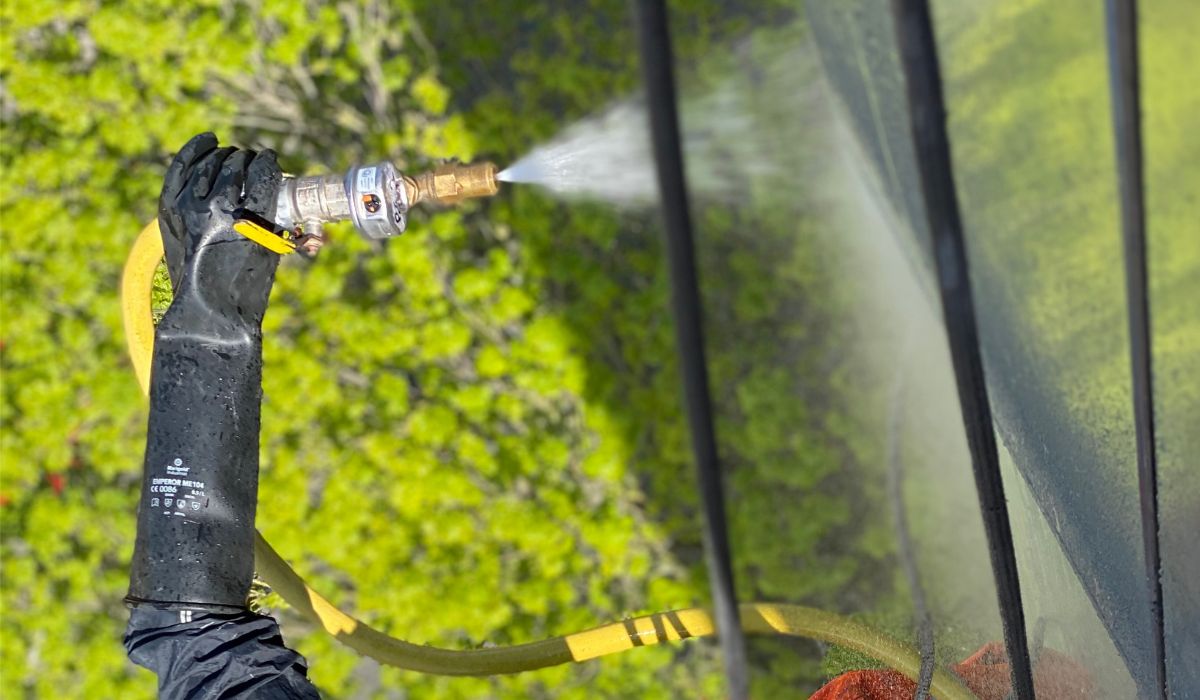What is a Water Tightness Test?
Abigail Moses 18th January 2022
Abigail Moses 18th January 2022

Water tightness testing is split into offsite and on site testing. Offsite testing is an initial test performed at a testing centre during the facade design stage.
Offsite water testing is part of a bigger process to determine the performance of the facade and how it will react in use.
Offsite performance mock up testing is to understand the overall performance and functionality of the facade.
On site testing
On-site testing differs from off site testing as it is used to check workmanship on a construction site.
The main tests performed are hose tests and spray-bar tests. Hose testing is used on closed jointed systems while spray-bar testing is used on open-jointed systems, windows, doors and cladding.
What is a hose test?
A hose test is conducted using a specific nozzle, spraying water at a set pressure and flow rate over a length of joint for a specific time and distance from the facade.
The distance between nozzle and facade should be maintained at 300mm during the spraying process. For each 1500mm section tested the spraying time is 5 minutes. Smaller sections would require a shorter spray time.
The hose testing process
Before testing begins, the internal is inspected for any standing water and to assess the visibility of joints internally.
The external of the facade should be clean, complete and free from visual impairment.
Decorative Finishes, sills and soffits should not be in place to give an unimpeded view.
For the entire duration of the testing, the internal should be checked for any water ingress.
Hose testing starts at the bottom of the area being tested, working across transoms, up intersecting mullions and then intersecting transoms. The process is completed from bottom to top and in one session.
Test time will depend upon how large an area is being tested.
If any leak is observed during testing the test shall be stopped. The time and location of the leak should be recorded. If no water ingress is observed during the spraying process the test specimen should be observed for a further 30 minutes. This is known as the drain down time. Any water ingress during this period should record along with the time of ingress.
If after the 30 minutes drain down period no water has been observed, the test specimen will receive a pass.
Spray-bar testing process
Before testing begins, the internal is inspected for any standing water and to assess the visibility of joints internally.
The external of the facade should be clean complete and free from visual impairment.
Decorative Finishes, sills and soffits should not be in place to give an unimpeded view.
A spray bar is set externally at the top of the test area.
Nozzles evenly spaced at 400mm centres along the bar are set at 250mm from the face of the test area.
Spraying is started and the flow rate is dependent upon the amount of nozzles on the bar.
For the entire duration of the tests, the internal should be checked for any water ingress.
Spray-bar testing runs for 30 minutes. If any leak is observed during testing the test shall be stopped. The time and location of the leak are then made note of. If no water ingress is observed during the spraying process the test specimen should be observed for a further 30 minutes. This is known as the drain down time. Any water ingress during this period should record along with the time of ingress.
If after the 30 minutes drain down period no water has been observed the test specimen will be passed.
Book a water tightness test
If you would like to enquire about our UKAS accredited water tightness tests, contact the Facade Group team today. A member of our team will then provide you with a free, no-obligation quote to consider.
Tags: UKAS, Water Testing, CWCT, Hose Testing, Spray Bar Testing, Site Hose TEst
Abigail Moses, 18th January 2022